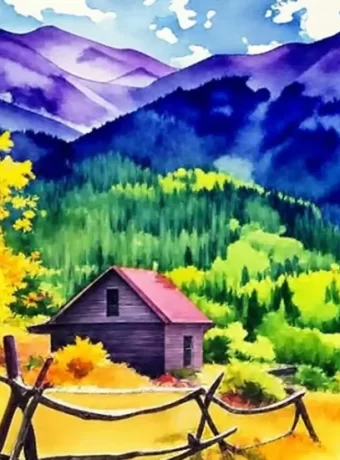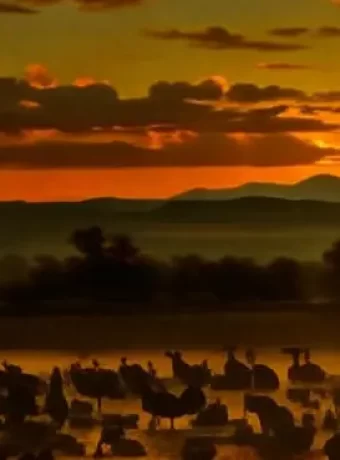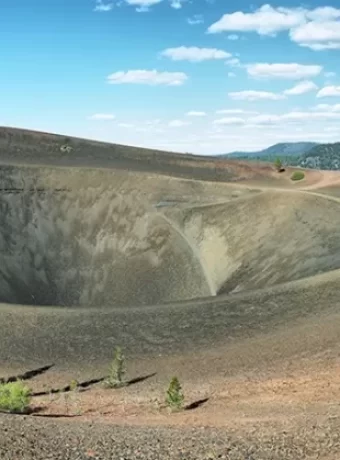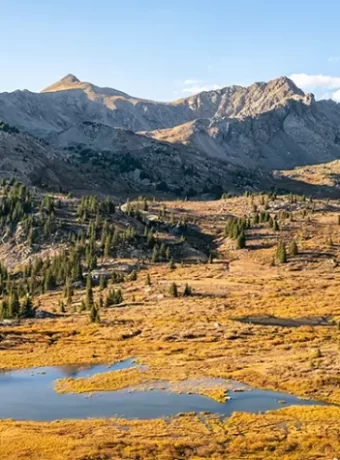Our Guide DIY Fly Fishing Blackfoot River Montana
Before the release of “A River Runs Through It,” the Blackfoot River in Montana flew under the radar for many. But for DIY fly fishing enthusiasts, this scenic waterway has become a prime destination. With its pristine waters, abundant trout population, and easy access, the Blackfoot offers a challenging yet rewarding experience for anglers of all levels. In this comprehensive guide, we’ll equip you with everything you need to know for DIY fly fishing Blackfoot River Montana.
Well I don’t know about everything. I have spend over 16 years walking and wading the North Fork of Blackfoot River and the Blackfoot River. I have enjoyed every excursion. Whether hooking small cutthroats or a big fish day, to those days of non. Just being there was days of elk standing in the river and moose doing the same by Lincoln, Montana.
Table of Contents
Planning Your Blackfoot River Fly Fishing Adventure
A successful DIY fly fishing Blackfoot River Montana trip starts with careful planning. This involves researching the river conditions, weather patterns, best fishing spots, and regulations. Familiarize yourself with the lay of the land using a Blackfoot River map, which will reveal the river’s many turns and potential fishing hotspots.
Best Times to Fly Fish the Blackfoot River
While the Blackfoot River allows year-round fishing, the most productive seasons are spring, early summer, and fall. Spring offers fantastic opportunities right after the runoff subsides. Early summer sees various insect hatches, creating a feeding frenzy for trout. And fall is the time for targeting larger brown trout, particularly in the lower sections of the river.
Blackfoot River Access Points
Numerous public access points are dotted along the Blackfoot. It is essential to understand that not all river sections provide the same fishing quality. Consider factors such as road access to the river, as some access points may be easier to reach than others.
The Montana Fish, Wildlife & Parks (FWP) website is a valuable tool that offers details about different fishing access sites. Their interactive map, which you can use as your fly fishing map, will be valuable for planning your DIY fly fishing Blackfoot River Montana adventure. Utilize this resource to pinpoint fishing access points along the river.
Understanding Blackfoot River Regulations
Make sure to check Montana Fish, Wildlife & Parks regulations before you start fishing. You’ll need a valid Montana fishing license. You can easily get yours through the convenient online licensing system.

Graphic Cutthroat Hoodie, UPF-50 for Great Days on the Water
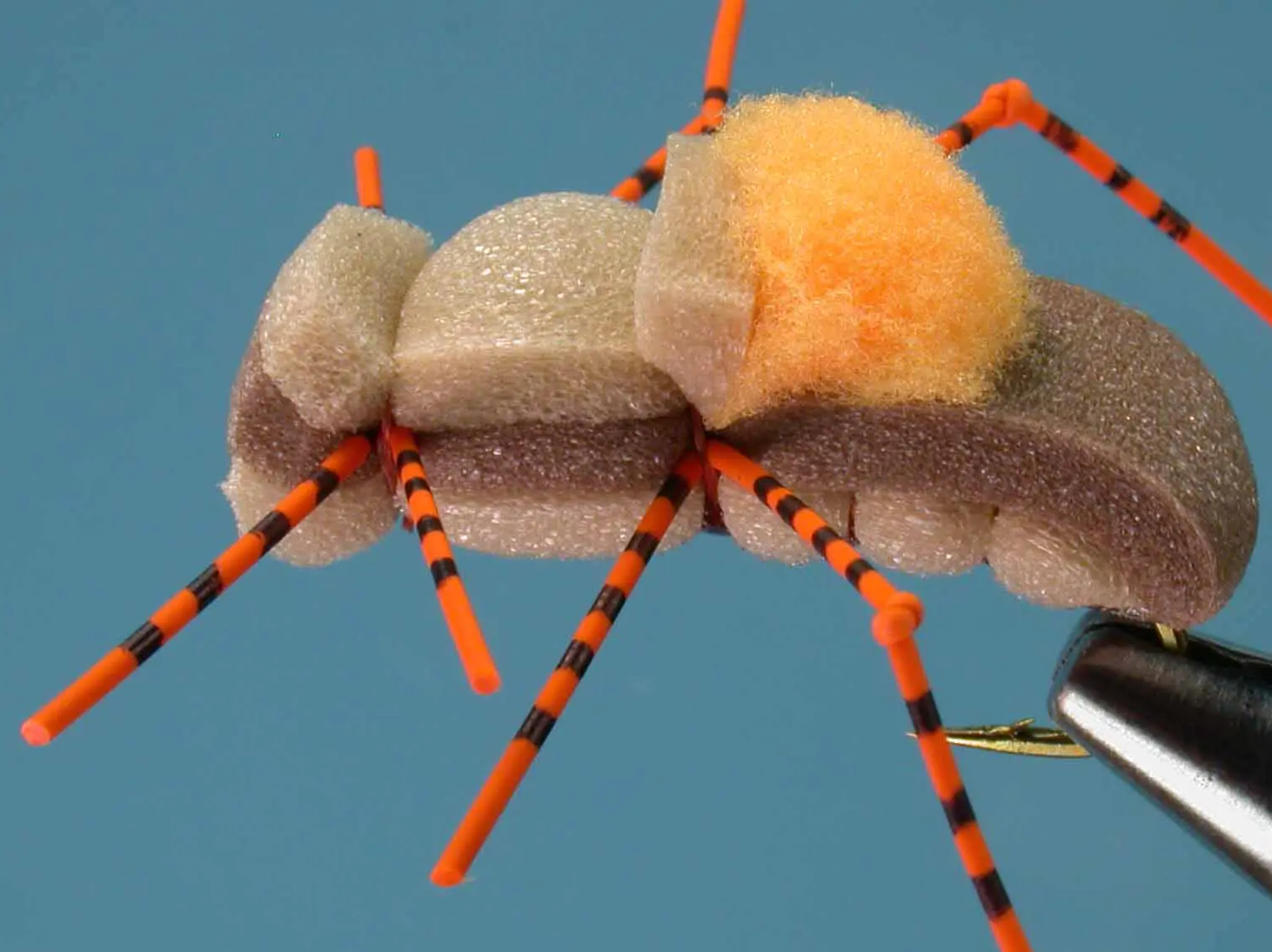
Fat Alberts Late Summer Through Fall
1. When to Fly Fish the Blackfoot River: Timing Is Everything
The Blackfoot River is renowned for its year-round fishing opportunities. However, Montana weather can be unpredictable, so packing layers and being prepared for anything is key.
Spring (March-May): Spring on the Blackfoot brings the promise of hungry trout eager to feed after a long winter. The spring runoff generally happens between April and May, creating prime conditions for dry fly fishing. Look for hatches of March Browns, Blue-Winged Olives (BWOs), and Skwala Stoneflies during this time.
Summer (June-August): Summer is synonymous with dry fly fishing on the Blackfoot. The highly anticipated salmon fly hatch occurs in late June or early July when water levels are ideal. This is the time to cast large, imitative dry flies like the Fat Alberts or Bitch Creek Nymph near the banks. As the weather warms, hoppers, ants, and beetles become prevalent, offering exciting opportunities for dry fly enthusiasts. Focus on areas near grassy banks and undercut stream banks where trout are likely to be feeding. When fishing hoppers I like to trail a small Beadhead Pheasant Tail Nymph.
Fall (September-October): As temperatures cool, the Blackfoot River’s brown trout become more aggressive, actively chasing streamers. Try streamers such as Woolly Buggers and Sculpzillas in natural colors to entice these fall feeders.
2. Blackfoot River Fishing Access: Pinpointing Prime Spots
The Blackfoot River is home to a June fly hatch and is full of diverse water features. Consider these sections for a prime DIY fly-fishing experience.
a) River Junction to Clearwater Crossing
The stretch from River Junction to Clearwater Crossing offers a more secluded experience compared to other sections of the Blackfoot River. Anglers can expect varied terrain, ranging from tranquil valleys to stretches of whitewater, providing diverse water conditions suited to various fly-fishing methods. Road access is good, with multiple fishing access points, including the River Junction Fishing Access Site, known for its challenging access but rewarding fishing. Several campgrounds are situated along this stretch, making it ideal for multi-day DIY fly-fishing trips.
b) Blackfoot River Recreation Corridor
Spanning 26 miles and boasting 16 public access points, the Blackfoot River Recreation Corridor is a haven for DIY anglers. Easily accessible and meticulously maintained, this section is perfect for wading anglers who enjoy exploring the river’s diverse water features.
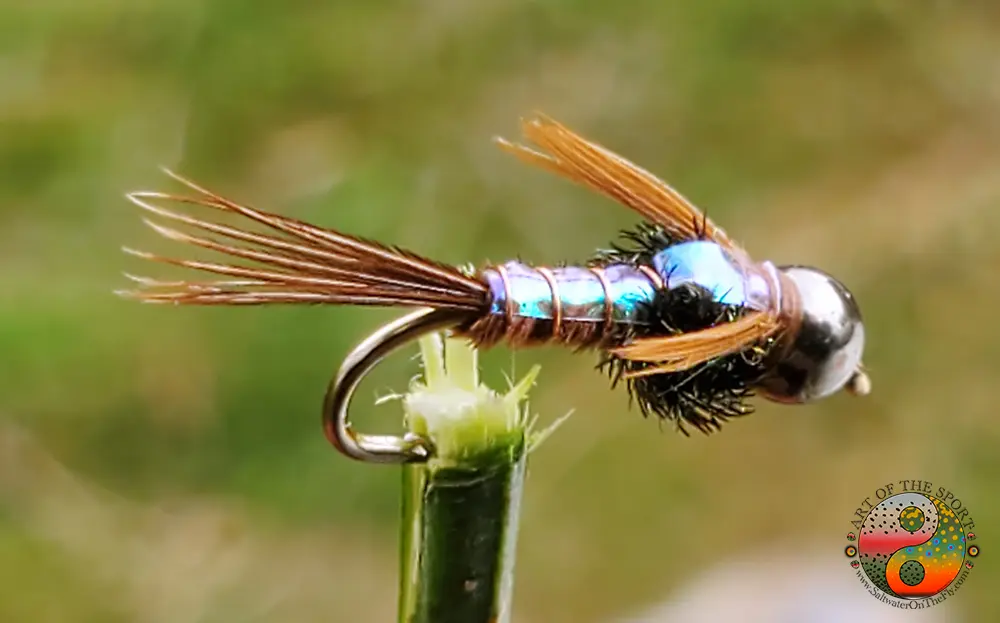
Beadhead Flashback Pheasant Tail All Year Round
3. Choosing Your Fly Fishing Gear: Essentials for the Blackfoot
Equipping yourself with the appropriate fly fishing gear is paramount for success on any fishing trip.
- Rod: A 9-foot 6″, 5 or 6-weight fly rod serves as an adaptable choice for the Blackfoot River. Pair it with a floating fly line to effectively present dry flies and nymphs, the most common methods employed on the Blackfoot. Consider a fly rod with enough backbone to handle larger trout.
- Reel: Invest in a fly reel with a smooth and reliable drag system to handle the occasional larger trout and windy conditions. Look for a reel with a good weight-to-balance ratio for optimal casting performance.
- Leader: Tapered leaders are essential for delicate presentations, especially when targeting the often-spooky trout of the Blackfoot. Bring a selection of tapered leaders in 9 to 12-foot lengths. Choose a leader that complements your fly choice and casting style.
- Tippet: Carry a range of tippet sizes, from 3X to 6X, to match your chosen flies and water conditions. Tippet material and strength should be appropriate for the size of trout you anticipate encountering.
- Waders & Boots: Pack breathable waders and sturdy wading boots for comfort and safety. Wading boots with felt soles or studded rubber soles provide excellent traction on the Blackfoot’s rocky bottom. A wading staff is highly recommended for added stability.
4. Blackfoot River Hatches: Matching the Hatch for Success
Matching the hatch—presenting an artificial fly that closely imitates the insects currently hatching on the water—is fundamental to successful fly fishing.
This chart outlines some of the prominent aquatic insect hatches on the Blackfoot River, providing insight into when these hatches generally occur:
| Season | Fly Pattern | Sizes | Notes |
|---|---|---|---|
| Spring | Blue-Winged Olive (BWO) | #18-22 | Typically fished as a dry fly during BWO hatches, often in the mornings. |
| Spring | March Brown | #12-16 | Effective as both a nymph pattern and a dry fly, particularly during the spring hatch when trout are actively looking for them. |
| Spring | Skwala Stonefly | #8-12 | A larger fly pattern, the Skwala Stonefly can be fished as a dry fly or a nymph, imitating the stoneflies that inhabit the Blackfoot River. |
| Summer | Salmonfly | #2-6 | The Salmonfly hatch is a major event on the Blackfoot, with dry fly patterns imitating the adult Salmonfly being highly effective. |
| Summer | Golden Stone | #8-12 | Fish Golden Stone dry fly patterns near the banks during their hatch, often in the evenings. |
| Summer | Green Drake | #10-12 | An important hatch, the Green Drake can be fished as a nymph during its early stages and as a dry fly when adults begin to emerge. |
| Summer | Pale Morning Dun (PMD) | #16-20 | A hatch that typically occurs midday, PMDs are best imitated with dry fly patterns. |
| Summer/Fall | Hoppers/Beetles/Ants | #8-14 | Terrestrial patterns like Hoppers, Beetles, and Ants are incredibly effective during the summer and early fall months, especially when fished near grassy banks and foam lines where terrestrial insects are likely to fall into the water. |
| Summer/Fall | Trico | #20-26 | Targeting rising trout during a Trico hatch requires delicate presentations, often necessitating the use of 6x or 7x tippet to present these small dry flies effectively. |
| Fall | Mahogany Dun | #18-22 | While primarily a fall hatch, the Mahogany Dun hatch can be somewhat weather-dependent. Imitate these duns with dry fly patterns. |
Techniques for Success Fly Fishing Blackfoot River Montana
Mastering a few key fly fishing techniques can significantly improve your chances of success on the Blackfoot River. By understanding the nuances of the river and refining your approach, you’ll increase your odds of hooking into the Blackfoot’s prized trout.
Drag-Free Drift
Achieve a drag-free drift by casting your line upstream and letting the fly float naturally. This technique is especially important on slower currents because trout can be extra cautious. Maintaining a drag-free drift is crucial for presenting your fly naturally, making it appear more enticing to trout.
Reading the Water
Learn how to identify feeding lanes, seams, riffles, and pockets where fish tend to hold. This takes practice, and observing the river will help you develop your DIY fly fishing Blackfoot River Montana game. Pay attention to the water’s speed, depth, and structure, as these factors influence where trout are most likely to be found. By observing the river and the behavior of fish, you’ll refine your approach and learn how to target specific areas effectively.
Presentation, Presentation, and Presentation Fly Fishing Blackfoot River Montana
How you present the fly makes a huge difference in tricking wary trout. Fish these grasshopper imitations along the shore, giving the impression that they got stuck in the river. A delicate presentation that mimics the natural movement of insects will yield better results.
Don’t shy away from casting these farther out in the water as it is not uncommon for a large trout to come to the surface to eat a grasshopper. If you tire of using dry flies, switch it up by using a grasshopper imitation. These work especially well in July, but can also be used into the beginning of September.
Fly Fishing Blackfoot River Montana Etiquette
The Blackfoot is a popular destination, especially during the peak fishing season. Practice good river etiquette to ensure a safe and positive experience for everyone. Remember that sharing the river responsibly ensures a more enjoyable experience for all.
- Give space to fellow anglers to avoid tangles and distractions.
- Pack out your trash, including discarded fishing line.
- Respect private property boundaries.
- Practice catch-and-release for a sustainable fishery. If you’re catching and releasing, make sure it’s legal and handle the fish with care to ensure its survival.
Staying Safe on the Blackfoot River Montana
While the Blackfoot offers an amazing fly fishing experience, prioritizing your safety is key. By being prepared for potential hazards and changing weather conditions, you can focus on enjoying your time on the river. Always err on the side of caution and prioritize your well-being when venturing out.
- Wear a personal flotation device, especially when wading in deeper water or in swift currents. Pack extra clothing in case you fall in. Montana is known for dramatic changes in weather, even during summer.
- Carry a first-aid kit and essential medication.
- Be mindful of changing weather conditions and adjust your plans. The USGS Montana Streamflow website gives updates about river temperatures in Bonner. Remember that river temperatures can fluctuate, and warmer temperatures can make fish more sluggish.
- Let someone know about your fishing plans, including your intended fishing locations and expected return time. This ensures that someone is aware of your whereabouts in case of an emergency.
Exploring the Surrounding Area
Beyond fly fishing, the Blackfoot River Valley offers numerous opportunities to make the most of your trip. The area boasts a blend of natural beauty and recreational opportunities, making it an ideal destination for outdoor enthusiasts. Take advantage of the chance to explore beyond the riverbanks and experience the full richness of the Blackfoot River Valley.
- Explore scenic hiking trails that wind through picturesque landscapes. From leisurely walks along the river to more challenging climbs, there are trails for all skill levels.
- Learn about local flora and fauna by visiting the Montana Natural History Center in Missoula, which offers exhibits and programs that showcase the region’s biodiversity.
- Experience the warmth and hospitality of nearby towns like Ovando and Missoula. It’s not uncommon to find vacation rentals available if you need accommodations for your DIY fly fishing Blackfoot River Montana trip. For anglers interested in delving deeper into the area, check out local guide services. These outfits often have seasoned guides who have extensive knowledge of secret spots and productive techniques for the Blackfoot River. Just remember to always be aware of your surroundings, especially if venturing out alone or on less-traveled paths. Wildlife encounters, although fascinating, should be admired from a safe distance.
FAQs about DIY Fly Fishing Blackfoot River Montana
What are some resources for real-time river conditions on the Blackfoot?
The USGS Montana Streamflow website offers valuable data like current flow rates and water temperature readings taken from various points along the Blackfoot. This website provides up-to-date information that can help you plan your fishing trips accordingly, ensuring that you’re well-informed about the river’s condition before heading out.
What should I do if I encounter wildlife while on my fishing trip?
Always remember to admire wildlife from afar. Carry bear spray with you as a precaution and make noise as you hike or move along the river. This way, you alert animals to your presence without startling them. Montana’s wild places are stunning, but entering their territory demands awareness and respect. Remember, pack it in, pack it out and leave no trace of your adventure behind. By minimizing your impact, you ensure that generations can also enjoy the beauty of the Blackfoot River and its surroundings.
Conclusion of Fly Fishing Blackfoot River Montana
DIY fly fishing Blackfoot River Montana is more than casting a line—it’s about immersing yourself in nature and enjoying the adventure. It offers anglers a unique opportunity to experience the thrill of reeling in trout. By using the resources in this guide, you’ll be fully equipped to embark on a successful and fulfilling fly fishing journey on the legendary Blackfoot River. As you navigate its currents and cast your line into its pristine waters, you’ll discover why the Blackfoot River continues to captivate anglers from all walks of life.


